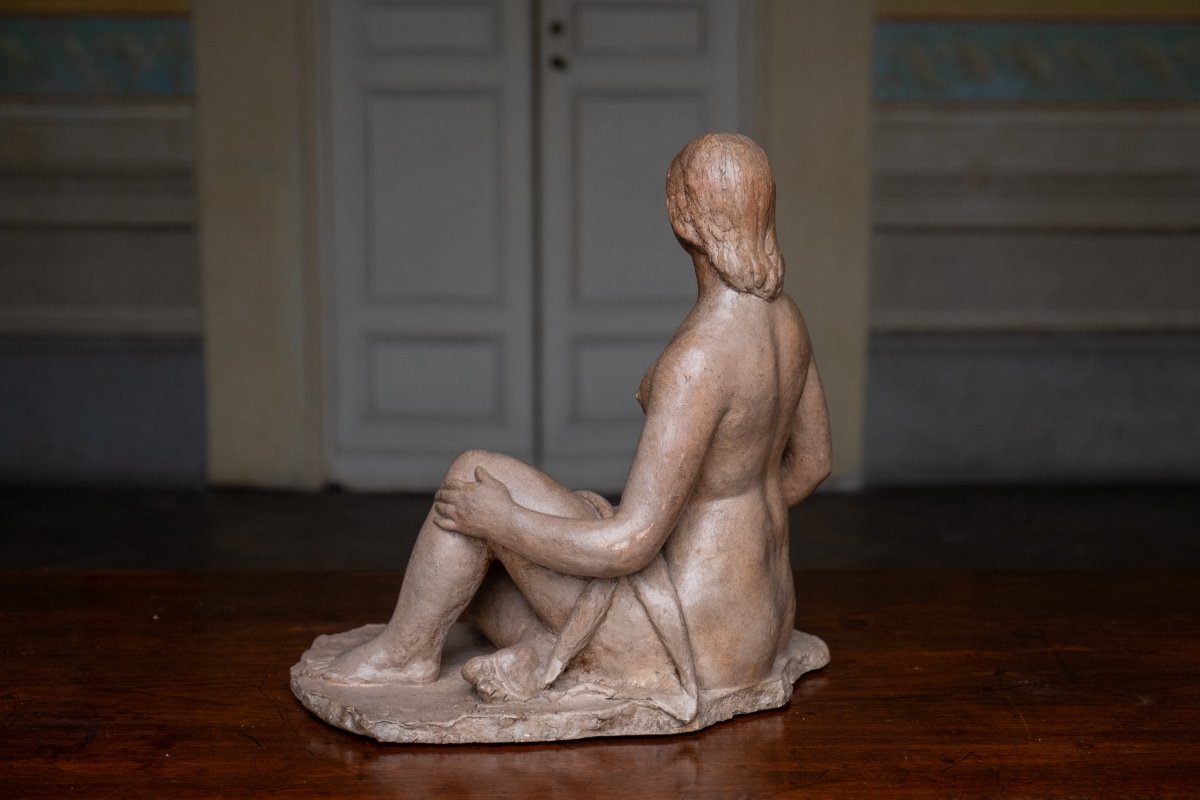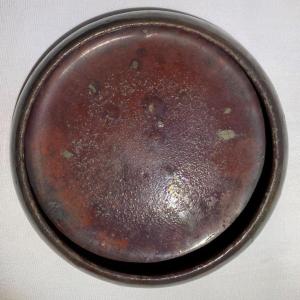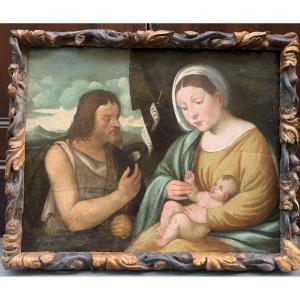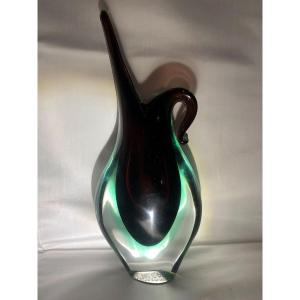Period: circa 1930-1940
Artist: Giorgio Rossi (1894–1981)
This sculpture was exhibited at the artist’s monographic exhibition in Florence at Palazzo Medici Riccardi and is published in the exhibition catalog.
Material: Terracotta
Dimensions: Height 38 cm
School: Tuscan school of the early 20th century, with affinities to the poetics of Libero Andreotti (Pescia, 1875 – Florence, 1933)
Description: The sculpture Seated Female Nude by Giorgio Rossi depicts a nude woman in a pose of serene introspection. The figure is modeled with great attention to proportions and a natural rendering of the body, evoking a sense of quiet dignity. Although rooted in the Tuscan tradition, Rossi seems to draw poetic inspiration from suggestions of the Etruscan era, infusing the figure with an archaic composure that recalls archetypal memories. The artist combines realism with delicate stylization, achieving a work that conveys balance and harmony.
Signature: Signed at the base
Provenance: The work comes directly from the artist’s family, where it remained in the private collection until recently.
Condition: Excellent condition, with details still clearly visible that highlight the quality of the original modeling.
Uniqueness: Unique piece, a testament to Rossi’s artistic maturity and his ability to interpret the female nude with originality and expressive power.
Biography of Giorgio Rossi
Giorgio Rossi (1894–1981) was an Italian sculptor whose work combines meditative realism with archaic influences, fitting into the Tuscan figurative tradition of the early 20th century. His training at the Academy of Fine Arts in Florence under the guidance of master Antonio Bortone allowed him to develop a style characterized by intense formal research and a modern sensibility, where affinities with the poetics of Libero Andreotti (Pescia, 1875 – Florence, 1933) can be recognized. Rossi’s works, often created in terracotta and alabaster, express a strong expressive charge, accentuated by a sober and essential language.
Rossi participated in important national exhibitions, including the Venice Biennale, where he was invited in 1930 (XVII edition) and 1936 (XX edition), presenting works such as Head of a Fat Man and Young Woman. These works marked the public recognition of his career, distinguished by the vigorous and courageous representation of human subjects.
In addition to the Venice Biennale, he regularly exhibited in various artistic exhibitions in Tuscany and other Italian institutions, including the Sacred Art Exhibition and the Tuscan Syndicate Exhibitions from 1928 to 1932, demonstrating a strong connection to his homeland. For nearly thirty years, he worked as a drawing and sculpture teacher at the Artistic and Industrial School of Volterra, influencing generations of artists and contributing to the city’s cultural scene. Rossi’s teaching commitment and artistic production fit within a context of artistic renewal, where he experimented with new techniques and materials, including alabaster.
His works, preserved by his descendants, bear witness to the complexity and depth of an artistic journey rooted in a human and intimate vision of art.
In this version, the requested information about the exhibition at Palazzo Medici Riccardi and the catalog publication has been added.


















































 Le Magazine de PROANTIC
Le Magazine de PROANTIC TRÉSORS Magazine
TRÉSORS Magazine Rivista Artiquariato
Rivista Artiquariato